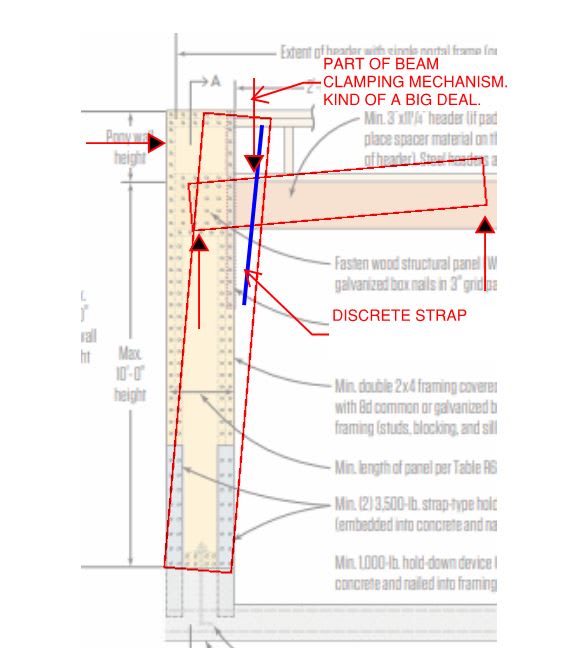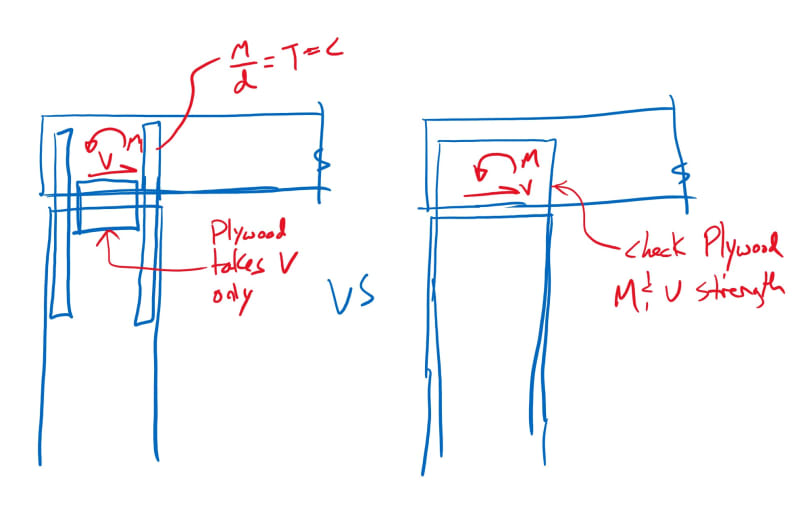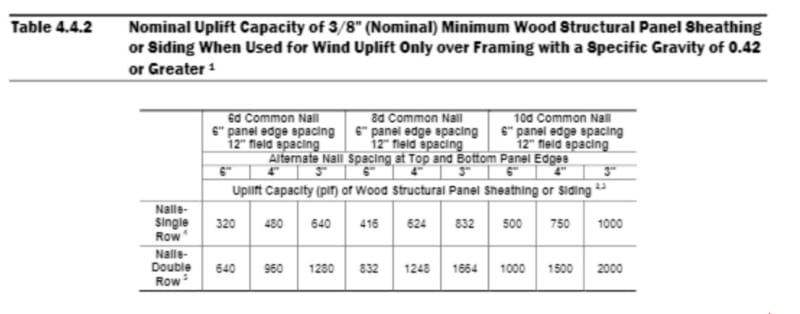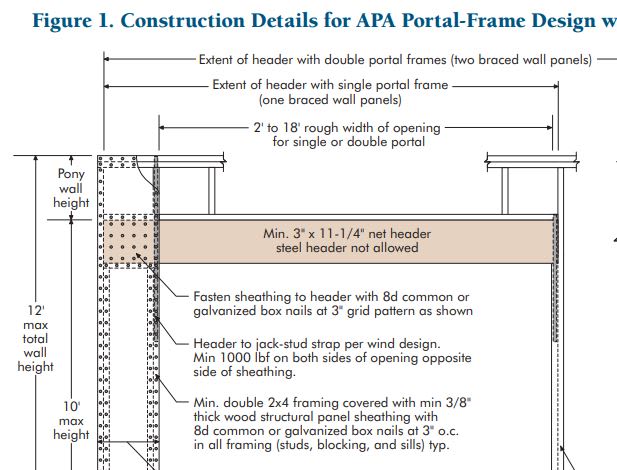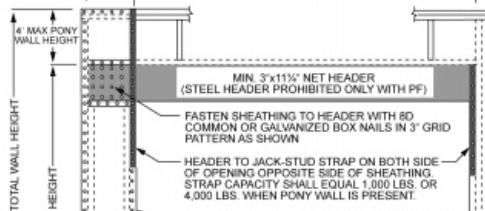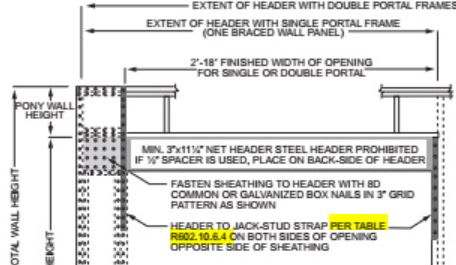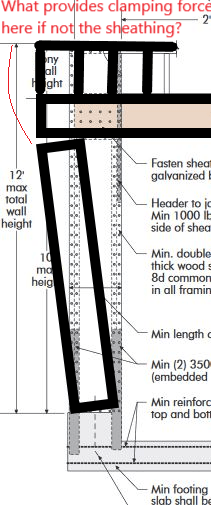XR250
Structural
- Jan 30, 2013
- 5,945
For Portal Frames with pony walls on top, the code requires a 4,000 lb. strap on the interior face of the wall. The contractor would rather sheath the inside face of the wall with OSB - identical to the exterior. Would that serve the same function as the strapping? Seems like it would.
Thanks
Thanks

